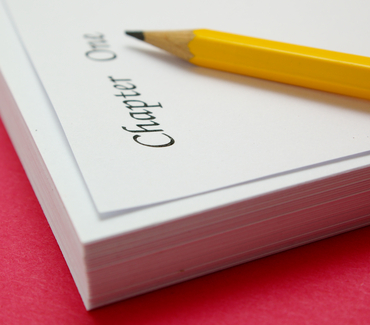Outlining your book or novel seems to be a matter of preference for authors. Some authors tend to outline their novels to the tenth degree and others tend to use a one-page outline. It’s really a matter of preference and there are as many techniques as there are opinions. The word is still out on which method is best to use; however, it really depends on what makes more sense to you.
In this section, you will be introduced to an elementary method of outlining and a more thorough structure for those requiring greater details as well as the discussions on the variety of techniques. The various techniques can be used to outline a simple children’s storybook, a non-fiction book or a full length fiction novel. See what works best for you.
Synopsis versus Outline
Many writers, in the early stages of their career, hear the word synopsis and sometimes confuse that with a call for an outline. There is a major difference. A synopsis of your book is just that – a beginning to end overview of your story. An outline is a breakdown of each chapter and scene and it covers the entire novel.
General Outline Details
In an outline, your book is broken down into explicit chapter-by-chapter details and scene-by-scene details. In addition, it should include events and all the applicable rational. This of course includes the goals of characters, the motivations of characters, and any associated conflicts – both internal and external conflicts. Each scene should include scene resolution which is not to be confused with conflict resolution – it is only the resolution of a particular scene.
Outlining is basically putting a plan of your novel on paper and is meant to help the writer complete the task. It is only a guideline and is done to help get your thoughts in order. Some writers prefer to forego outlines and work best without one. It is simply a matter of preference.
The idea behind outlining is that is helps a writer think through the plot, characters, scenes and various arcs within a story. It allows the writer to see the overall story and how it comes together and to make changes without too much effort. It is just a writing tool.
With an outline in hand, some writers feel they can begin writing more easily because they know what comes next and writing doesn’t tend to go off on a tangent. It is especially helpful for those that have a limited schedule for writing and this allows them to make good use of their time.
An outline gives the writer a quick glance at the overall plot and “trouble” areas can be easily spotted before too much effort is spent on a particular scene or chapter. It sometimes helps with research ideas as this allows you to see where these items may best fit into your novel or section. Outlines do change and that’s okay. It’s only a guideline. Having an outline lets you easily spot any holes or problems that may exist in the plot or characters.
Specifics of Outlining
As stated earlier, there are many variations and methods to outlining and you have to find out what works best for you. There is no right way to outlining – it’s a matter of preference. Methods for outlining are:
I. Microsoft Word.
Using Microsoft Word’s outline feature is one of the easiest tools for putting together an outline format. By following the elementary outline structure listed below, you can get a rough two to three page outline for your book. Listed below are major categories to be captured when outlining your book and to help you get started.
a. Describe the type of novel that is best suited to this idea.
b. Is it mainstream – describe: Romance, Mystery, Western, Horror, Fantasy, Science Fiction, Action/Adventure, Other. Provide more details.
c. List your main characters:
d. Protagonist – Name, primary goal, most notable personality.
e. Antagonist – Name, primary goal, most notable personality, relationship to protagonist.
f. Others – Name, primary goal, most notable personality, relationship to protagonist and antagonist.
g. Setting(s) If your novel has more than one setting, list them.
h. What is the main complication of the story — to be solved by main character?
i. Primary obstacles that prevent protagonist from achieving his/her goal.
j. How does the story end for the main characters?
k. Use one-page to summarize the story idea in a present-tense narrative.
II. Mind mapping.
This is a general overall outline at a very macro level. It is make by drawing a circle in the middle of a blank page and writing down your overall book plot and mission. You then create lines protruding from the circle listing ideas of chapters that could follow. From each of the chapter lines you can also include more lines for scenes, etc. This tends to be a method used by writers at a very global level. It is just another method to outlining.
III. Outlining software.
Using software for outlining is on the market and some people feel more comfortable using this type of software to begin their outlines.
a. Some of the software programs available for writers who are Mac users are: Scrivener, WriteRoom, Ulysses, CopyWrite, Jer’s Novel Writer, StoryMill to name a few.
b. Some of the software programs available for writers who are PC users are: PageFour, RoughDraft, WriteWay Pro, Liquid Story Binder, StoryView, NewNovelist, etc.
Using an Outline Structure
Some people need a more detailed outline to begin their book. Others seem to get by with just a quick outline. For those that need a little more detail and don’t want to use writing software, click on the outline link to get you started. Grab yourself a big note book and begin outlining your novel. Some people prefer to write everything on a computer; however, a notepad is more portable. Use whatever is more convenient for you.
Using a Step Sheet Outline
Another way of completing your first draft is using a Step Sheet outline. The Step Sheet outline is geared towards capturing the action details, the pacing of your story, and character development within your book. This technique uses the “who, what, when, where, why and how” concepts. You may want to use the Step Sheet outline to break out what will be occurring within each of the three main sections of your book (the beginning, the middle and the end) or you can use this structure for a full blown outline for your novel. See below for suggestions on how to use a Step Sheet.
Step Sheet for Beginning/Middle/End & General Outline
Use as many plot points, character expansion and pacing bullets as necessary to capture the essence of your story within each of the sections listed below. You can have as few as one bullet point for each or several dozen. It all depends on the length and complexity of your story. See example of how to break down your plot points, character expansion and pacing of the story.
The Beginning
- Plot Point: A little girl loses her father and is moved to an orphanage. (The what/how)
- Character expansion: Use action to show how the little girl befriends another orphan that helps her survive the ordeal. (The who)
- Pacing/drama/motivation: Show how the little girl feels losing her father and being left alone. (The why)
The Middle
- Plot Point: The little girl is not liked by owner of the orphanage. (The what/how)
- Character expansion: Use action to show how the owner dislikes the little girl. (The who)
- Pacing/drama/motivation: Show that the owner resents that she had to work hard all her life and then finds out that the little girl came from a more middle class background. (The why)
The End
- Plot Point: The owner loses the orphanage and is taken over by a friend of the little girl’s father. (The what/how)
- Character expansion: Use action to show how the little girl and the family friend find each other again. (The who)
- Pacing/drama/motivation: At the end of the story show how the family friend outsmarts the previous owner and gets the orphanage. (The why)
You can also use the same structure to complete a full chapter outline that captures your story from start to finish using all of the concepts of “who, what, when, where, why and how.” The two chapters illustrate how this Step Sheet outline technique can be used to outline your full novel. Note that the beginning/middle/end illustrations show the story from a macro viewpoint. The Step Sheet outline for each of the chapters captures the details in a more detailed fashion.
Chapter 1
Setting: The orphanage (The where)
- Time: Early 1930s – First week in orphanage (The when)
- Plot Point: A little girl loses her father and is moved to an orphanage. (The what/how)
- Character expansion: Use action to show how the little girl befriends another orphan that helps her survive the ordeal. (The who)
- Supporting characters: The owner of orphanage, the orphans, the orphan that the little girl befriends, the help staff, the cooks and the teachers. (The who)
- Pacing/drama/motivation: Show how the little girl feels losing her father and being left alone. (The why)
Chapter 2 (Continue same format with other chapters)
- Setting: The orphanage (The where)
- Time: Second week in orphanage (The when)
- Plot Point: The owner finds out that the little girl came from more upscale family. (The what/how)
- Character expansion: Use action to show how the owner had to work hard all her life and nothing was handed to her. (The who)
- Supporting characters: The owner’s significant other, the owner’s business associate, the owner’s banker, the head master of the orphans that attend school. (The who)
- Pacing/drama/motivation: Show how the owner is resentful of the little girl. (The why)
All the techniques and tips are provided to give you a general overview as to how you can begin outlining your first draft. All the techniques can be expanded upon if needed. The goal is to provide you with some broad tools on how to begin your first draft. Keep in mind that these are only suggestions on how to outline and it’s really up to you to find the tool that best works for you.







